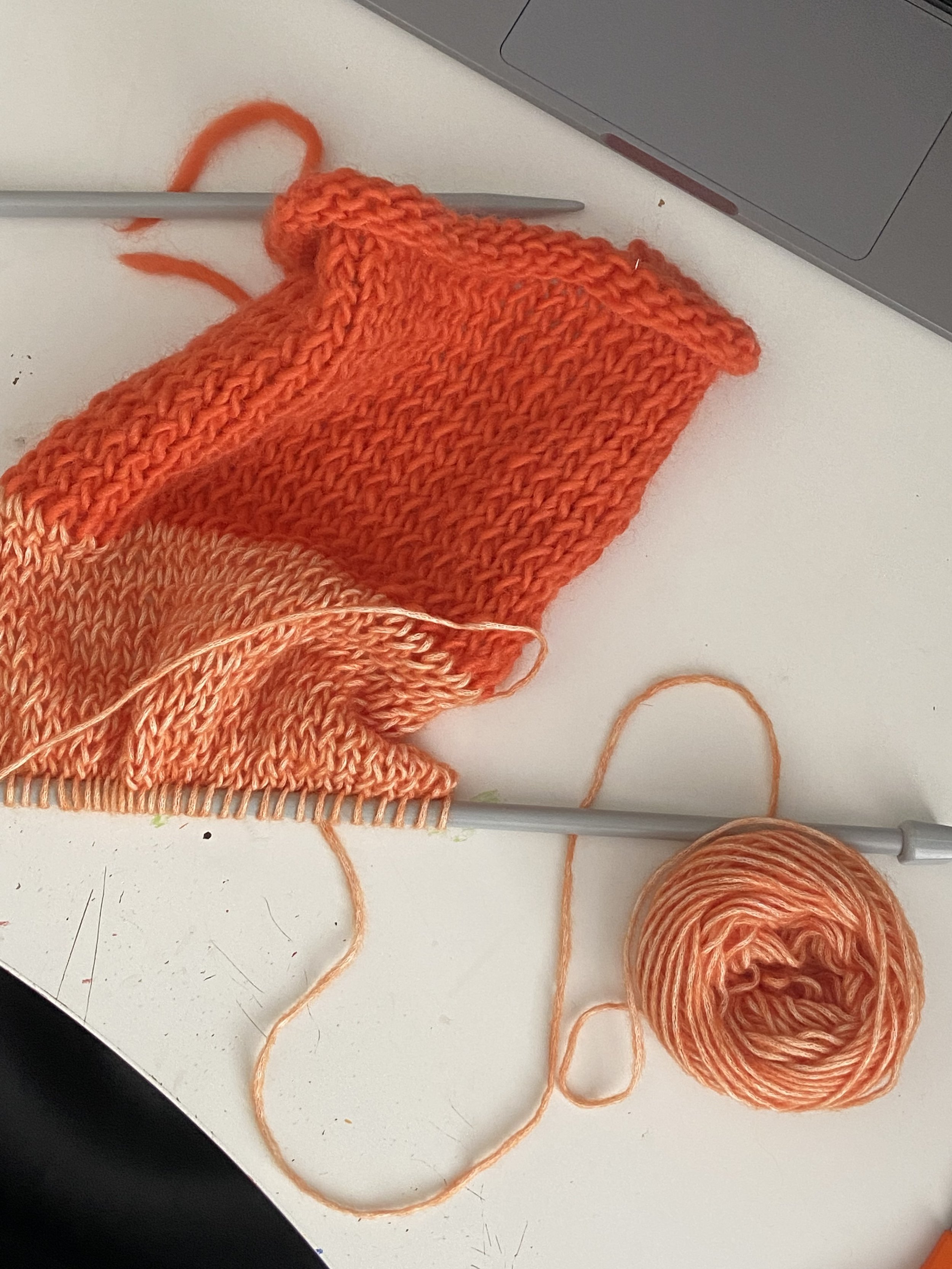Making our own clothes
Is this our path to Sustainability?
Image: Anja Clausius
As internet trends and DIY culture continue to bleed amongst our phone screens, hobbies such as crocheting and knitting have begun to infiltrate the media we consume. This infatuation with handmade clothing specifically started as pieces from British designers Hope Macaulay (Chunky Knitwear) and JW Anderson (Harry Styles Cardigan) erupted in popularity within apps like TikTok and Instagram.
The explosion of crochet and knitwear within digital media and brand collections has enabled a new generation, especially young women, to engage with garment making on a tactile level. This sudden direction of curation has ignited a new conversation surrounding consuming and creating clothing — specifically how we may become more sustainable when confronted with the strenuous reality of garment making. While we indulge in practices of knitting, crocheting, and weaving, the significance of their cultural histories becomes increasingly prevalent, prompting us to reflect on the autonomy and individuality textiles have granted women and people of colour. Sustainability has become a common topic of discussion and people are growingly aware of the disturbing reality that is the fast fashion industry, which in turn may maintain the cultures that brought these practices to life.
Within fast fashion discourse there is a concerning lack of a bigger picture. Our social awareness often only revolves around the spheres we occupy — as opposed to a holistic perspective that considers alternate parts of the world. Textile making, especially knitting and weaving, are deeply rooted within culture as practices pioneered by women. From weaving silk in West Bengal to cotton and wool mixes in Gujarat, Kente cloth from South Ghana and woven bamboo in China, these traditional techniques were created by women. However, in today’s fashion industry the women who founded these methods are also the group perpetually oppressed by the demand for their craft. As the trend of knitwear ignites people to engage with garment making, the laborious efforts it requires to design and craft clothing becomes far more evident to the individual.
With a practice such as crochet, which cannot be replicated by a machine and must be completely carried out by hand, its surge into peoples’ day to day life has confronted many with its rigorous demands — especially how underappreciated these practices must be in the fast fashion industry when brands such as Zara and H&M sell pieces for such small prices. As we begin to develop a greater understanding of the methods to curate garments and the ways in which we can be more sustainable, there may be a deeper appreciation for these practices we otherwise neglect to consider and hopefully a liberation for the women and young girls exploited by the fashion industry.
The explosion of handmade knitwear — this article’s referral to all practices mentioned — has prompted a new era of awareness surrounding sustainable practice. Yet there is still concern of whether this notion of mass-consumption should also concern materials, and whether there is a possible existence of ‘mass-curation’. Can we really make too much? And how can we be conscious of the materials being used?
The materials we utilise when we create are just as significant as the items we make. Although acrylic and polyester yarn is the cheapest on the market it is not biodegradable or recyclable, this in turn releases microfibers into the water supply when washed. There are many arguments for and against other yarns — cotton, wool, alpaca, and silk are all alternatives that have also been heavily criticised. Noting these complexities, it is important for us to engage in practices and materials that are the most accessibly sustainable to us.
These natural materials and their paired practices, especially weaving, maintain great cultural significance to people from East Asia, South-East Asia, Europe, and the Indigenous people of the Americas. Yet the majority of the people exploited and enslaved by the fashion industry are, ironically, those who developed it. The integration of these items within Western trends and markets makes it simpler for people to overlook the cultures where these styles and practices originate from. As we begin to engage in these practices ourselves, we simultaneously engage in these cultures, allowing us to honour and maintain the history of making with our hands.
Garment curation also holds importance to women, a historical gateway to liberation and survival. These practices are notable in the ways they prove the endurance of textile art as a form of expression. Our lack of appreciation for these practices are rooted in a lack of recognition of women’s work, and a perception of this work as invaluable compared to men’s. As we reignite with these practices we are able to acknowledge domestic labour as a critical part of a functioning economy. Knitting, crocheting, and weaving can be recognised as a beautiful art form where each loop, knot, stitch, and thread is embedded with cultural pride, hard work, and love.
These rich cultural acts of garment making prove to be more significant than just a newly found trend or hobby; they are a possible gateway to a future much more concerned with sustainability. Yet we must be conscious of better alternatives and consistently aware that our actions are far more direct than they may seem. Engaging with these practices ourselves are not only fulfilling but ultimately enriching, as they allow our own cultures and histories to transcend and for us to be far more aware of the labour involved in garment production. It may not be possible for everyone to be completely ethical in all their purchases, or be expected to craft their own clothes, but we must rework our perception of garment making as cultural labour that should be recognised, validated, and honoured. A more sustainable future will not be paved with a chant of: there is no ethical consumption under-capitalism! It will be paved with direct action.





